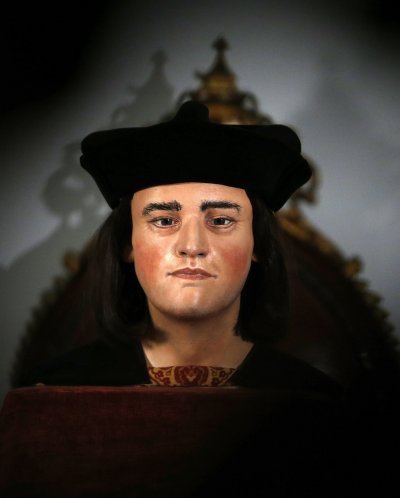Five Centuries Mystery Old! Death Remains Analysis Of Richard III Revealed Sexual Secrets Of Royal Family!

DNA analysis has enabled the British geneticists to determine the authenticity of the skeleton of Richard III, who was found under a car park in Leicester in 2012, and thus solve the mystery old five centuries.
Sequencing king's DNA, however, revealed the existence of infidelity whose nature could jeopardize the relationship of certain British monarchs.
- We found a break in the genetic chain - said at a press conference in London, Kevin Surer, vice-chancellor of the University of Leicester.
Under the "interruption" we mean the occurrence of illegitimate child in the family tree.
- We do not know at what level this interruption is, or is not to suggest that her Majesty (Queen Elizabeth) should not be located on the throne - added quickly Surer, insisting on the "complicated" history of the British monarchy.
He pointed out that these data could be used for some claims that Queen Elizabeth II has no place in the English throne, but that "he is not the one who decides about this".
His presentation was followed parallel with the publication in the scientific journal "Nature" study, which with 99.9 percent of accuracy resolves the mystery of the disappearance of the remains of the last King of England who died on the battlefield, at the Battle of Bosworth in 1485, leaving no descendants behind.
Scientists, however, have been unable to establish a connection through the male line to John of Gent, the first Duke of Lancaster and great grandfather's brother Richard III, which sparked suspicions of infidelity.
Kevin Surer believes that identified "disruption" in the DNA question the legitimacy of Henry IV, Henry V, Henry VI, and "the whole dynasty Tudor", starting from Henry VII, Henry VIII, Edward VI, Mary I and Elizabeth I.
DNA skeleton is corresponding to the DNA of two current descendants of his sister, Anne of York.
After a fierce fight over the election of the city where he will finally rest, the remains of Richard III were buried in the Cathedral of Leicester.
The king, who was Shakespeare immortalized as the evil hunchback and bloodthirsty tyrant, he gave to the British another mystery.
Richard lost the so-called War of the Roses between the successor to the English throne - a decade-long struggle noble houses Lancaster and York.
Just two years ago he was on the throne. He was killed in Bosworth battle on 22 August 1485, after which his desecrated body was left naked in an inn.
He was buried without ceremony in a monastery.
Richard III was long considered to be the royal monster, mostly thanks to the William Shakespeare. In his epic drama resulting hundred years after Richard's death, Shakespeare's King described as cruel usurper. And with it as ugly and disfigured constructed - which at the time was a sign of character and malformations.
The manner in which Richard III is presented should not be surprising - after his death England was ruled by a rival dynasty Tudor. At a time when Shakespeare created, on the throne sat Elizabeth I, granddaughter of Henry Tudor, who was the winner of the War of roses and made history as King Henry VII.
Article Comments
Articles Search
Sponsor
There are zero sub-categories in this parent category.
There are zero sub-categories in this parent category.
There are zero sub-categories in this parent category.
















